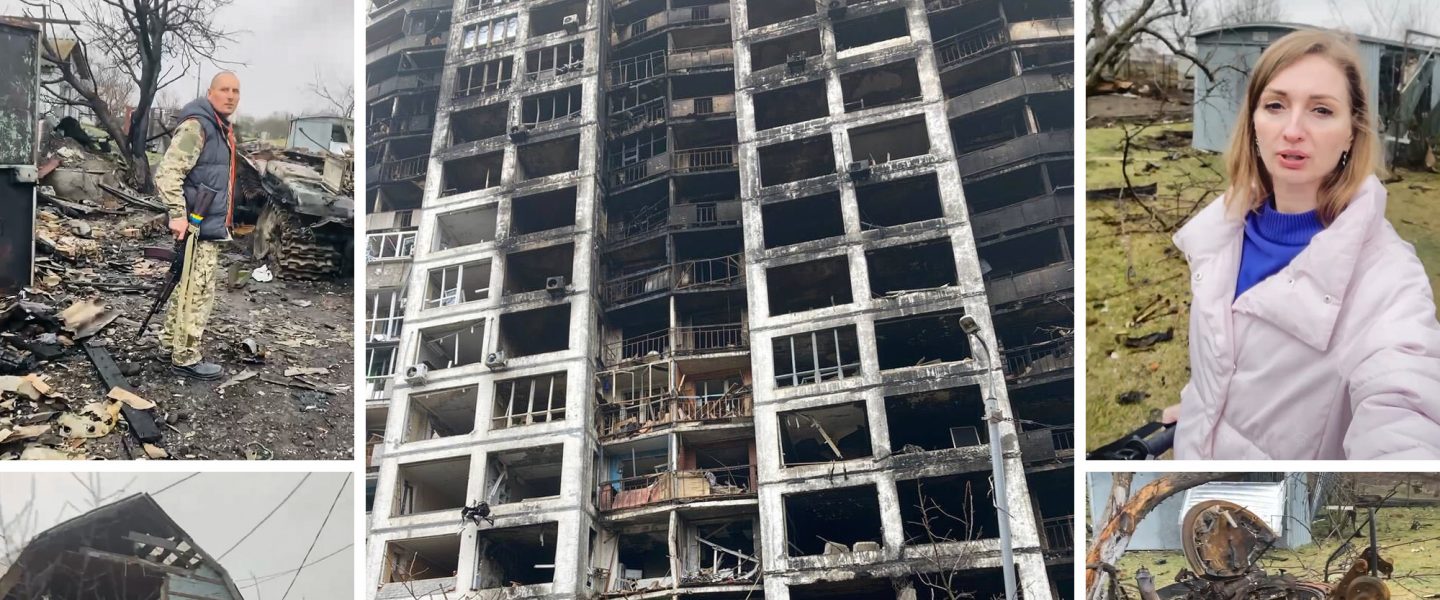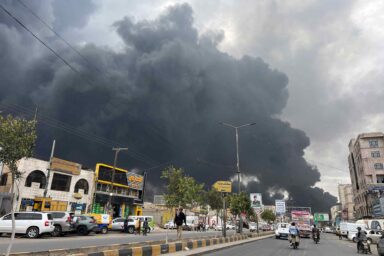WhoWhatWhy correspondent shows a behind-the scene look at what the retreating Russian army left behind in previously occupied areas of Ukraine.
When residents of Velyka Dymerka, a village of approximately 10,000 people 18 miles northeast of Kyiv, returned home after fighting near the Ukrainian capital subsided earlier this month to see the state of their homes, some were greeted by new semipermanent lawn ornaments: Russian tanks.
Disabled or destroyed Russian tanks awaiting removal remain alongside many of these now-empty homes. Conditions for the tanks are made worse with Ukraine’s “mud season,” which has just begun following the arrival of spring. Many tanks will sit there indefinitely unless a local farmer and their tractor are available.
“You can see a Russian tank here,” said WhoWhatWhy correspondent Iryna Kabluchko, on an April 3 tour of the village. “People used to live here.”
While the withdrawal of Russian forces from Velyka Dymerka and other areas around Kyiv on April 3 is considered the most significant Ukrainian victory to date in the nearly two-month-old Russian invasion, evidence of the war is everywhere. Burned-out tanks and other armored vehicles, leveled homes and burned-out apartment blocks, as well as damning evidence of civilian massacres and other war crimes serve as visual reminders of the active combat of the prior weeks — and an ominous warning of what may yet lay ahead for much of the country as the war grinds on.
The Ukrainian army recaptured Velyka Dymerka, along with the towns of Hoholiv and Skybyn, following a final artillery exchange on March 31. Civilians returned a few days later, despite active hazards that remain even for areas out of range from Russian artillery strikes, such as land mines.
For now, demining efforts are underway in Kyiv’s suburbs while civilians remaining and returning deal with the destruction.
Kabluchko visited three areas of Kyiv’s suburbs for an inside look at the condition of the Obolon and Sviatoshynskyi districts and the town of Velyka Dymerka after Russia’s retreat.
Relatively untouched for the war’s first three weeks, the first series of attacks in the Obolon District, a neighborhood north of Kyiv famous for its Obolon beer, occurred March 14.
Here, a 14-story apartment building was struck in an attack, leading to the complete destruction of the building and one reported death.
”I was woken by this huge explosion… And everything in the room was on the floor… windows… the TV, everything,” one man told Sky News.
“They even took clothes and children’s shoes. Windows were broken in all the shops and they took the food.”
The next day, on March 15, artillery fire hit another residential building in the Sviatoshynskyi District. Firefighters fought a blaze that raged through the first to 16th floors of the 123-unit building as more shellings struck two cars leading to massive fires that later engulfed a 1.2-acre area of grass.
While approximately half of the building’s residents fled before the shelling, some families and elderly residents stayed behind. One of the remaining elderly residents was Polina, who lived on the second floor of the building at the time of the attack.
Now all that remains of her apartment is rubble. All of Polina’s remaining belongings were burned in the fire. After losing all of her things, Polina is left with nowhere to go. She blames Putin for the situation she is left in, but even her own family isn’t offering succor.
In a recent call to Russian relatives, Polina’s family told her to “be patient. Putin will free you soon.”
Russian forces initially occupied the village on March 10 and killed at least 11 of the remaining civilians, according to the Ukrainian prosecutor-general’s office. In addition to damaged or destroyed buildings, locals who remained said the Russians looted shops and homes, stealing anything that wasn’t nailed down.
“They even took clothes and children’s shoes. Windows were broken in all the shops, and they took the food,” Kabluchko said.
Now police and other rescuers are tasked with picking up the pieces of what is left while retrieving 11 bodies lying in the streets of Velkya Dymerka.
Another man was killed after Russia’s retreat from the village when, while opening the trunk of his car, he set off a mine, according to Kabluchko.
Slowly, some civilians of Velkya Dymerka and the Obolon and Sviatoshynskyi districts are returning to the area once called home, welcomed back by the abandoned tanks, looted shops, and rubble. Without a peace agreement and with the specter of another return visit from the invaders, they’re aware this return may be premature.



